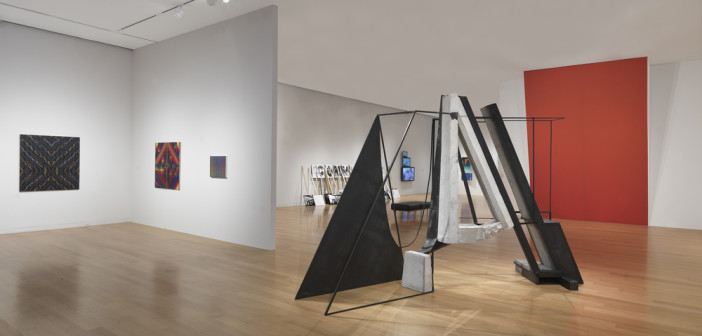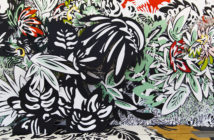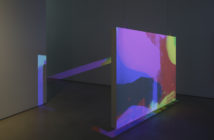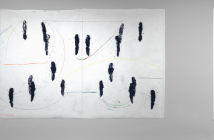Over the last few years I’ve developed sympathy for those who organize large, all-encompassing exhibits like biennials. If you hold on too tightly to a curatorial vision, you can create an autobiographical list of your favorite artists or styles. If you are too loose with a curatorial vision, you may accidentally create a Rorschach test allowing the public to complain about almost anything; including what others might deem a success.
The deCordova Biennial, now in its third iteration, is a paradox. It’s the type of show that you don’t remember the show, but you remember the work. Walking around it gives you a feeling that something is off, and I think reading the catalog reveals what is causing that feeling. The deCordova Biennial is not one thing. I have complete sympathy for this beast’s curator, but the exhibition doesn’t commit to any vision for art besides the idea that artists in New England are part of a wider network that includes artists outside of New England. The Biennial doesn’t become a Rorschach test because the labels weren’t good enough or for some other technical flaw. It was designed to be a Rorschach test.
Former museum director Paul Master-Karnik founded an annual series of exhibitions, titled Artists/Visions, in 1989. In 1998, reflecting the annual regularity of this series, they were re-titled as The deCordova Annual. A deCordova employee once described the Annual to me as the place where the great artists who did not fit into any of the group shows were given space to show their work. In 2010,1 The deCordova Biennial sprang out of The deCordova Annual. Master-Karnik intended Artists/Visions to serve the region, as does the current Biennial; the intention is to create a snapshot of the artists in New England and to feature emerging talent.
This goal is a bear of a problem. First, as the curator Lexi Lee Sullivan states in this year’s catalog, just calling something regional is loaded with socio-political problems. Is regional a bad word? It might imply that the local is out of step with global goals. That it is a side-market where old art still lives and you can find the equivalent of art bootlegs. To quote Dushko Petrovich and Roger White’s Regionalism: "A local artist is not as good as a local vegetable."2
Calling it a biennial probably heaps as much socio-political baggage on to this exhibition as calling it regional. When it was an annual, it was always discussed as being simply a gathering of artists. There was no attempt to creating a convenient, but false, story to unite the work in naïve optimism for our region. Maybe the problem is with our perception of what a biennial should be?
Weaving an all-encompassing, grand narrative that tries to explain the nuances of a group show might be the most overused curatorial tool. Sullivan decided that this was an impossible task, and that Yeats’ words (The center cannot hold) are applicable to the situation in which visual artists find themselves. There is no singular creative or working mode that is appropriate for all artists living and working in New England. Without that unifying principle, the viewer is left to see the work for what it is, as individual points in an array of art making practices.
This is as it should be, in theory, but in walking around the Biennial, it’s hard to see it as more than a presentation of some good, but random, work. It doesn’t build up, it doesn’t have a rhythm, it doesn’t surprise. It introduces or offers up individual artists or styles without placing them in a milieu. The problem is not that Sullivan didn’t invent an unjustified context, but that by admitting that there is not a backdrop that is applicable to these artists, this strategy undercuts the entire biennial process. If a consummate professional with three well-qualified assistants can’t find a way to make sense of these artists, then how can the average viewer?
[1] Yes, the math doesn’t add up. The Biennials were in 2010, 2011, and 2013.
[2] Regionalism is available at the Biennial as a hand out and is a great piece of writing that underscores the problem of having a regional Biennial.




